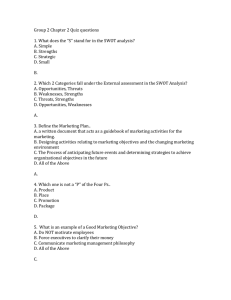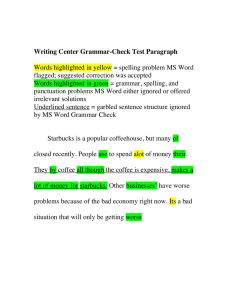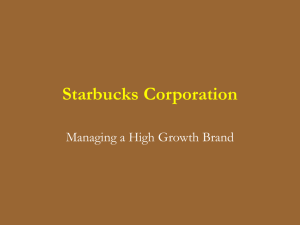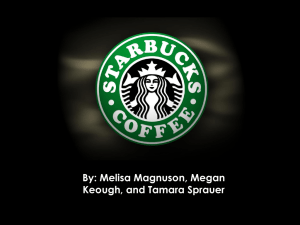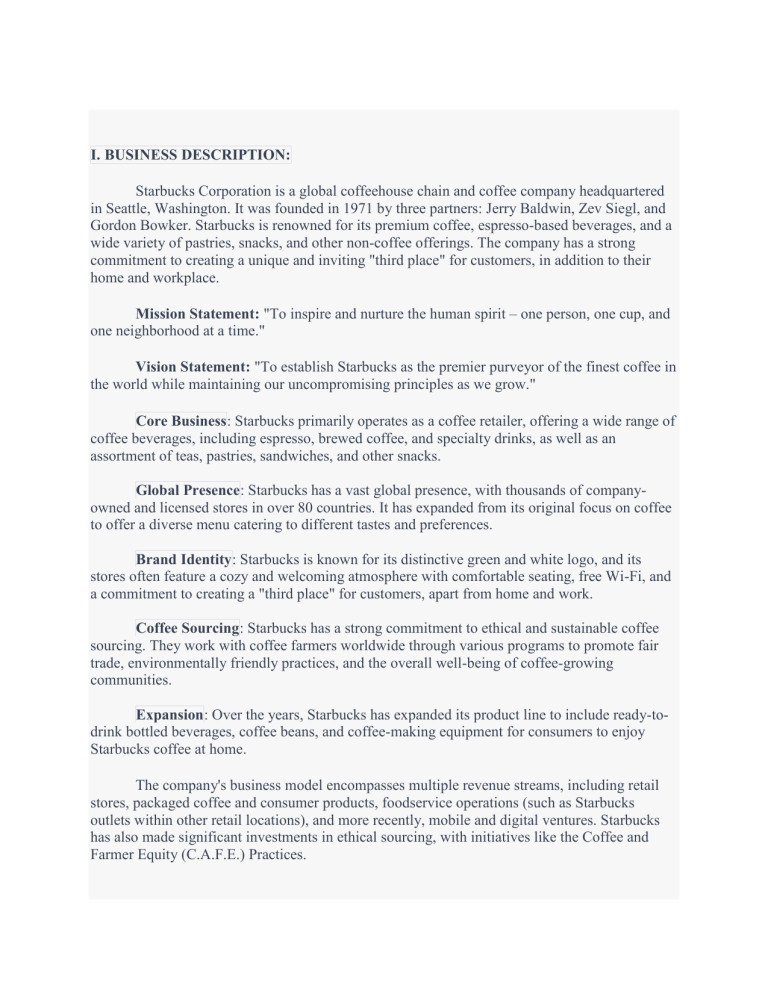
I. BUSINESS DESCRIPTION: Starbucks Corporation is a global coffeehouse chain and coffee company headquartered in Seattle, Washington. It was founded in 1971 by three partners: Jerry Baldwin, Zev Siegl, and Gordon Bowker. Starbucks is renowned for its premium coffee, espresso-based beverages, and a wide variety of pastries, snacks, and other non-coffee offerings. The company has a strong commitment to creating a unique and inviting "third place" for customers, in addition to their home and workplace. Mission Statement: "To inspire and nurture the human spirit – one person, one cup, and one neighborhood at a time." Vision Statement: "To establish Starbucks as the premier purveyor of the finest coffee in the world while maintaining our uncompromising principles as we grow." Core Business: Starbucks primarily operates as a coffee retailer, offering a wide range of coffee beverages, including espresso, brewed coffee, and specialty drinks, as well as an assortment of teas, pastries, sandwiches, and other snacks. Global Presence: Starbucks has a vast global presence, with thousands of companyowned and licensed stores in over 80 countries. It has expanded from its original focus on coffee to offer a diverse menu catering to different tastes and preferences. Brand Identity: Starbucks is known for its distinctive green and white logo, and its stores often feature a cozy and welcoming atmosphere with comfortable seating, free Wi-Fi, and a commitment to creating a "third place" for customers, apart from home and work. Coffee Sourcing: Starbucks has a strong commitment to ethical and sustainable coffee sourcing. They work with coffee farmers worldwide through various programs to promote fair trade, environmentally friendly practices, and the overall well-being of coffee-growing communities. Expansion: Over the years, Starbucks has expanded its product line to include ready-todrink bottled beverages, coffee beans, and coffee-making equipment for consumers to enjoy Starbucks coffee at home. The company's business model encompasses multiple revenue streams, including retail stores, packaged coffee and consumer products, foodservice operations (such as Starbucks outlets within other retail locations), and more recently, mobile and digital ventures. Starbucks has also made significant investments in ethical sourcing, with initiatives like the Coffee and Farmer Equity (C.A.F.E.) Practices. II. PROBLEMS ENCOUNTERED BY STARBUCKS: a. Market Saturation: In some regions, especially urban areas, Starbucks faced market saturation, which led to increased competition and potentially cannibalization of its own stores. b. High Prices: Starbucks has been criticized for its relatively high prices, which can deter price-sensitive customers, especially in times of economic downturns. c. Health and Dietary Concerns: Growing concerns about health and dietary choices have led to challenges in offering healthier menu options and addressing dietary preferences, such as dairy-free or low-sugar options. d. Environmental Concerns: As with many large coffee chains, Starbucks has faced criticism for its environmental impact, such as the use of disposable cups and the carbon footprint associated with its global operations. e. Labor Issues: Starbucks has faced issues related to labor and employee satisfaction, including allegations of inadequate wages and difficulties in unionization efforts. III. STRATEGIES USED BY STARBUCKS TO SOLVE THE PROBLEMS: a. Diversification and Innovation: Starbucks addressed market saturation by diversifying its product offerings and introducing new concepts. They also constantly innovate with new beverage and food items to keep customers engaged. b. Pricing Strategies: To tackle the perception of high prices, Starbucks introduced value options like the "Morning Menu" and offers discounted drinks during certain promotions. They also have a rewards program that incentives customer loyalty. c. Menu Customization: Starbucks has adapted to health and dietary concerns by expanding its menu to include more diverse and customizable options, including dairy alternatives and lower-sugar items. They also provide nutritional information to help customers make informed choices. d. Sustainability Initiatives: Starbucks has made significant strides in addressing environmental concerns. They've pledged to make their cups more sustainable, invest in renewable energy, and set ambitious goals to reduce their carbon footprint. They also encourage customers to use reusable cups and have implemented recycling programs in stores. e. Employee Engagement: To address labor issues, Starbucks has implemented measures like wage increases, healthcare benefits for part-time employees, and stock options. They've also focused on employee training and career development to improve job satisfaction. In summary, Starbucks has encountered several challenges throughout its history but has employed strategies such as diversification, pricing adjustments, menu customization, sustainability initiatives, and employee-focused measures to address these issues and maintain its position as a leading global coffee brand. IV. RESPONSE/CONCLUSIONS Being in a big business organization doesn’t guarantee problem-free business. Problems and issues, may it be internal or external will always arise no matter how intensive your planning and management is. However, what will makes your business sustained its operation and flourish, like Starbucks, is to never stop innovating. Observe, think, choose the best solution, implement, see the result, then observe again-- It is a continuous process so you don’t reach the “Stop” lane.

